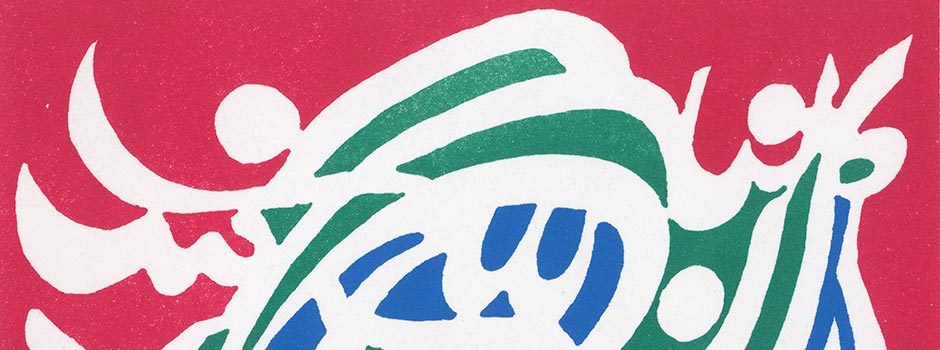
EXHIBITION AT THE MEEM GALLERY, DUBAI, UAE (SEP 24 – NOV 5, 2019) Iran Print Presents Four Iranian Modern Masters
Sep 15, 2019 INSPO, Exhibition

In parallel with its ongoing Arab Print exhibition series, Meem Gallery presents Iran Print, its first presentation of printmaking from Iran. The exhibition opens on 23 September and will be on view from 24 September until 5 November 2019.
The exhibition is curated by Yashar Samimi Mofakham and Tarlan Rafiee and showcases the long history of printmaking in Iran and its development into the 20th century. It features works by Iranian modern masters Bahman Mohassess, Sirak Melkonian, Parviz Tanavoli and Charles Hossein Zenderoudi alongside a historical collection of Qajar period lithographs.
The Qajars dynasty came to power in 1779 and brought with it an appetite for the visual arts and new technologies. The crown prince and governor of Azerbaijan Abbas Mirza sent students to study lithography and printmaking in England and Russia. He established a printing house in Tabriz in 1812, making the city an important center of publishing. As well as utilizing these new technologies for the production of printed text in newspapers and books, the Qajars adapted the media to mass-produce images of the shahs to aid in the dissemination of their likeness, broadening their reach and helping to the establish their supremacy.
The first exhibition titled Arab Print was held at Meem Gallery in 2008. The project was revived in 2016 with Arab Print Vol II, closely followed by Arab Print Vol III in 2017 and Arab Print IV in 2018. Each edition of the exhibition focuses on a particular era, method or country of origin. Meem Gallery resumes this exhibition programme, which will result in creating the seminal book on printmaking in the Arab World, at the end of the exhibition series.
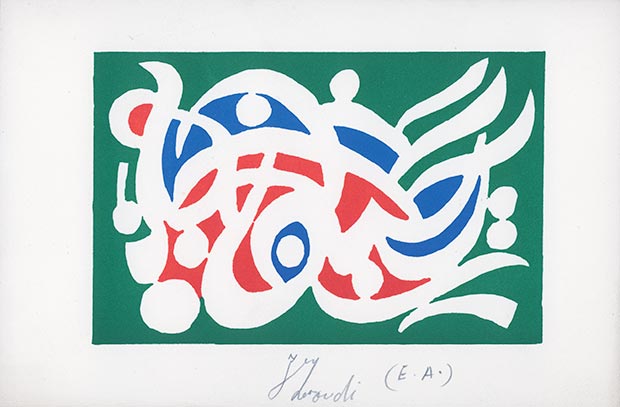 Charles Hossein Zenderoudi / Courtesy of Meem Gallery
Charles Hossein Zenderoudi / Courtesy of Meem Gallery
 Charles Hossein Zenderoudi / Courtesy of Meem Gallery
Charles Hossein Zenderoudi / Courtesy of Meem Gallery
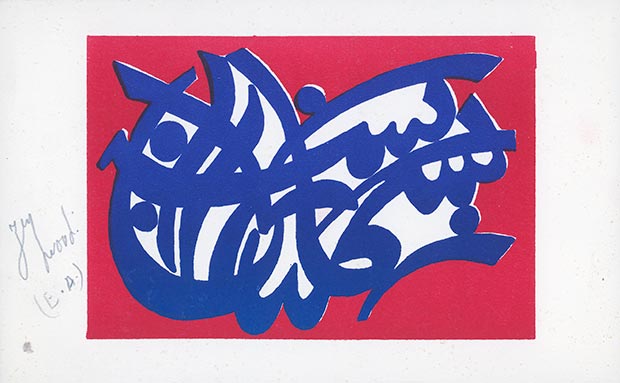 Charles Hossein Zenderoudi / Courtesy of Meem Gallery
Charles Hossein Zenderoudi / Courtesy of Meem Gallery
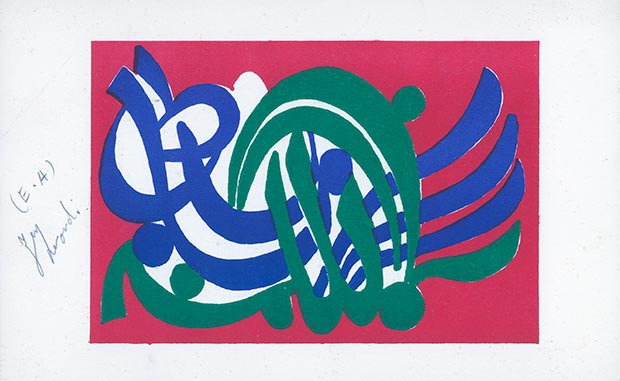 Charles Hossein Zenderoudi / Courtesy of Meem Gallery
Charles Hossein Zenderoudi / Courtesy of Meem Gallery
Zenderoudi was born in 1937 Tehran, Iran. He lives and works in France. Known as one of the founders of the neo-traditionalist Saqqakhaneh movement, Charles Hossein Zenderoudi enrolled at the Tehran College of Decorative Arts to study painting in the mid-1950s. His interest in traditional Islamic material culture and aesthetics, most notably Persian calligraphy, led him to develop his distinctive abstract compositions, dense with dots, letter, and numbers.
In 1961 he moved to Paris in order to focus on his painting, where he met celebrated artists like Alberto Giacometti, Lucio Fontana, and Stephen Poliakoff, and later became a French national. He was invited to participate in and won awards at both the Paris Biennial (1961) the Venice Biennale (1962). In 1963 his work K+L+32+H+4 was acquired by MOMA, which led him to more international acclaim. His work is now held in many of the leading international art institutions in North America, Europe, and the Middle East, including the British Museum, London; Grey Collection, New York; Beaubourg Center, George Pompidou, Paris and Mathaf Museum, Doha; Tehran Museum of Contemporary Art, Tehran.
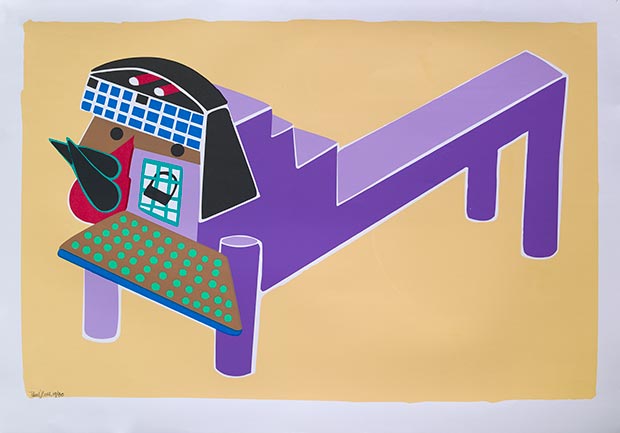 Parviz Tanavoli, Posrtfolio of Lions / Courtesy of Meem Gallery
Parviz Tanavoli, Posrtfolio of Lions / Courtesy of Meem Gallery
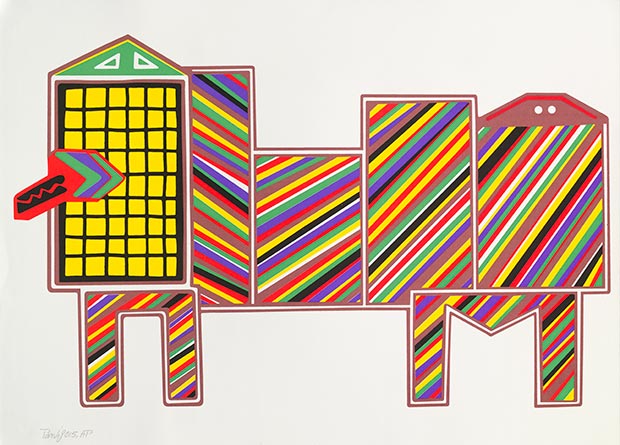 Parviz Tanavoli, Portfolio of Lions / Courtesy of Meem Gallery
Parviz Tanavoli, Portfolio of Lions / Courtesy of Meem Gallery
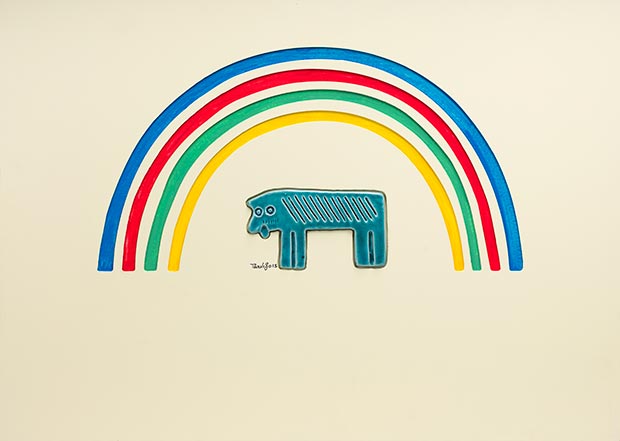 Parviz Tanavoli, Portfolio of Lions / Courtesy of Meem Gallery
Parviz Tanavoli, Portfolio of Lions / Courtesy of Meem Gallery
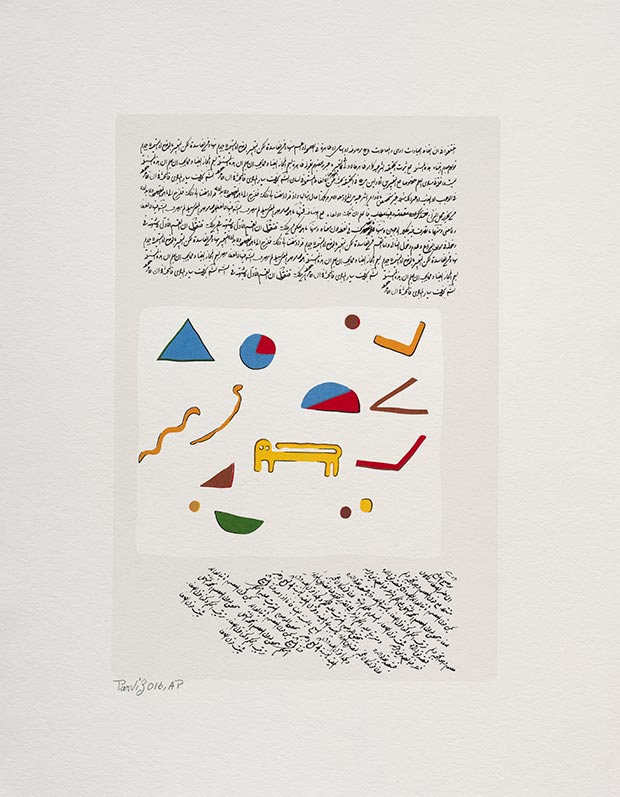 Parviz Tanavoli, Wonders / Courtesy of Meem Gallery
Parviz Tanavoli, Wonders / Courtesy of Meem Gallery
Tanavoli was born in 1937, Tehran, Iran. He lives and works in Vancouver, Canada, and Tehran, Iran. Considered as the father of modern Iranian sculpture, Parviz Tanavoli was a central figure in the formation of the Saqqakhaneh movement – a neo-traditional style of art that derives inspiration from Iranian folk art and culture. Tanavoli has created works in bronze, ceramic, fiberglass, neon, textiles and scrap metal. His oeuvre displays a deep engagement with Persian folkloric traditions, poetry, and literature, all expressed in a recurring series of subjects, including the calligraphic figure of Heech (Nothingness), Farhad the Mountain Carver, Lock, Poet, Prophet, Lovers, Walls, Hand, Lion, and Bird. Additionally, Tanavoli is a painter, printmaker, and a prolific writer. He has authored numerous books and articles on the artistic culture of Iran.
Tanavoli graduated from the Fine Arts School in Tehran in 1956, after which he travelled to Italy, where he studied at the Accademia di Belle Arti in Carrara. Returning to Iran two years later, the artist exhibited his work at Farhang Hall, marking the first sculpture exhibition in Iran and gaining him critical acclaim. In 1959, after receiving a highly coveted scholarship, he returned to Italy to study at the Brera Academy in Milan, graduating with honours. Upon his return to Tehran in 1960, Tanavoli helped establish the curriculum for the newly established College of Decorative Arts, where he also taught sculpture. A year later, after meeting the American art collector Abby Grey at a group exhibition in Saderat Bank, the artist travelled to Minnesota as an artist-in-residence at the Minneapolis College of Art, later accepting a teaching post there. In 1964, he returned to Iran, to teach sculpture in the Fine Arts Faculty of Tehran University.
In 1979, Tanavoli retired as head of the sculpture department at Tehran University and left Iran with his family to settle in Vancouver. During this time, he published extensively on the traditions of the craft of Iran, travelling to the country regularly for research and continuing to exhibit his works and collections internationally. Tanavoli’s works have been exhibited extensively all around the world, with a retrospective of his work held at Tehran Museum of Contemporary Art in 2003. 2017 saw the museum host another solo exhibition of the artist’s work, titled Lion’s of Iran. The artist’s work is held in numerous museum collections, including the British Museum, London; Guggenheim Museum, Abu Dhabi; Mathaf Museum, Qatar; Metropolitan Museum, New York; Museum of Modern Art, New York; Museum of Contemporary Art, Tehran; Olympic Park, Seoul, South Korea and the Tate Modern, London.
 Bahman Mohassess / Courtesy of Meem Gallery
Bahman Mohassess / Courtesy of Meem Gallery
Bahman Mohasses was a prominent Iranian painter, sculptor, and printmaker. He was also known in dramaturgical circles, due to his translation services being utilised for theatrical scripts. As a young painter working in a realist style, in the 1950’s Mohassess joined the Khorous-Jangi Society, an avant-garde artistic group founded by Jalil Ziapour in 1949 in Iran. In 1954 he moved to Italy and attended the Accademia di Bella Arti di Roma, where he began experimenting with the subject matters he was later so well known for; such as; expressive and unusually formed animals, objects and the human figure.
Mohassess returned to Iran in 1964 with a progressive approach and became a central figure in the intellectual society of Iran. In 1968 Group Panj (Panj meaning ‘five’ in Farsi) was founded by pioneers of Iranian modern art, Bahman Mohassess, Parviz Tanavoli, Charles Hossein Zenderoudi, Sohrab Sepehri, and Abolghassem Saidi. The Group Panj had a very short life but left its mark on the Iranian art scene.
Mohassess held several solo and group exhibitions and his works have been represented at biennales of Tehran, São Paulo, Venice and Paris, Tehran international Art Fair, Art Basel, Salon d'Automne, Tehran Museum of Contemporary Art (TMoCA), the British Museum and The Muséed’Art Moderne de la Ville de Paris. His works are part of several international private and public collections such as the British Museum, TMoCA, Niavaran Palace in Tehran, Tate Britain and LACMA.
 Sirak Melkonian, Linocut / Courtesy of Meem Gallery
Sirak Melkonian, Linocut / Courtesy of Meem Gallery
Melkonian was born in 1931, Tehran, Iran. He lives and works in Toronto, Canada and is considered to be one of the founders of the Iranian-Armenian modern art movement and a true pioneer of Iranian modernism.
Melkonian is well known for his abstract paintings, often of a topographical nature. He began his career, like many other painters, using figuration as his primary stylistic trait in his drawings, prints, and paintings. He then began experimenting with other Iranian modernists, as a reaction to the older generation of Iranian artists. His figurative works drew attention to his art and brought him the Imperial Court Prize at the Tehran Biennale in 1958 for his works, including his linocuts. His works were appreciated and found at the Paris Biennale (1959), Venice Biennale (1958) after he had previously won the Contemporary Iranian Artist Exhibition of the Iran American Society (1957).
In the early 1960s, Melkonian began focusing more specifically towards abstraction in his work, and became a leading figure in the Iranian art scene, due to his successes at home and internationally. In 1961, Melkonian was part of the exhibition hosted at Saderat Bank in Tehran (alongside, Marcos Grigorian, Bijan Saffari, Sohrab Sepehri, Manucher Sheybani, and Parviz Tanavoli) which drew the support and attention of Iranian arts patron Abby Grey.
Melkonian founded the Azad Art Group in the early 1970s, with some other important artists living and working in Iran at the time. They were introduced formally at the Tehran International Art Fair in 1974, pushing the boundaries and understanding of conceptual art and installation works in Iran.
Sirak Melkonian has exhibited his work in over 140 exhibitions worldwide, from Tehran to Paris, New York to Yerevan. His works can be found in major public and private international collections; such as the Niavaran Palace, TMoCA, and LACMA.
This exhibition includes works on loan from a private collection, as well as works available for sale.
Comments
Add a comment